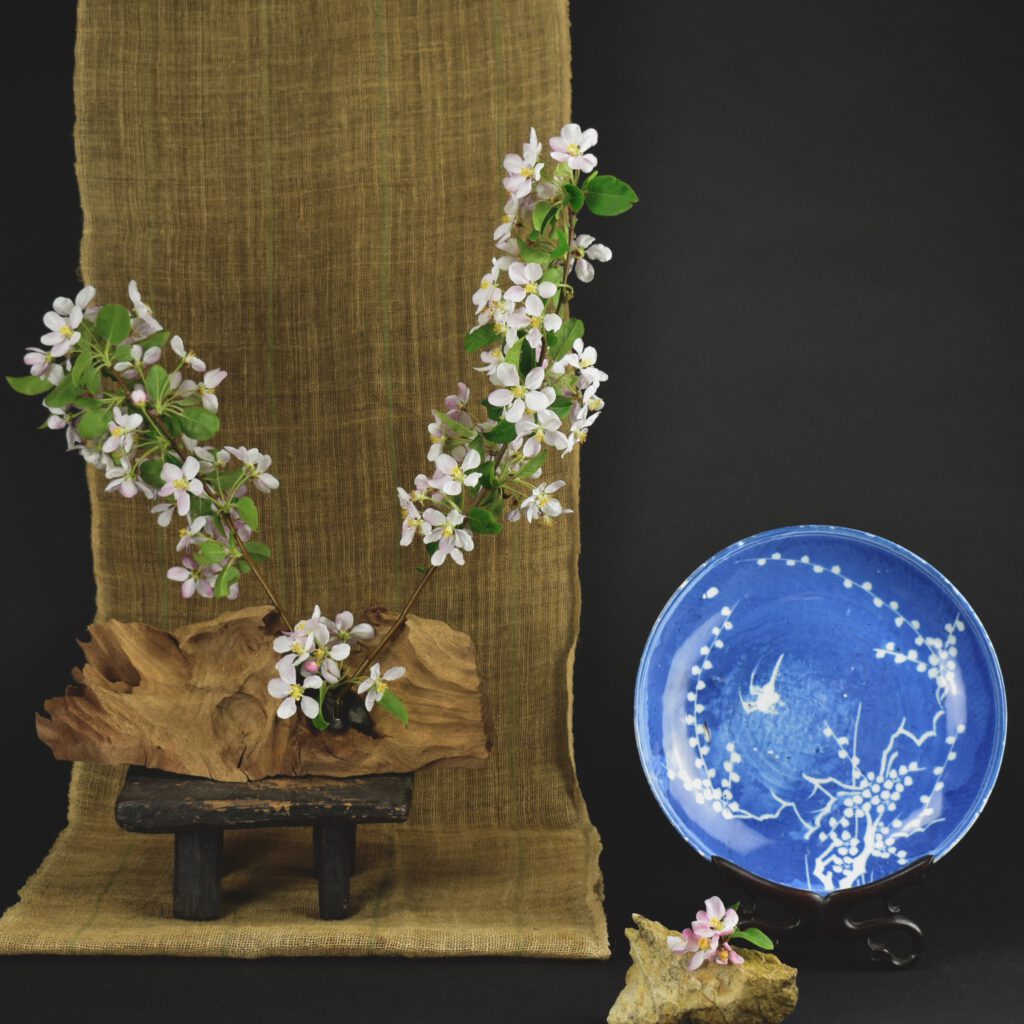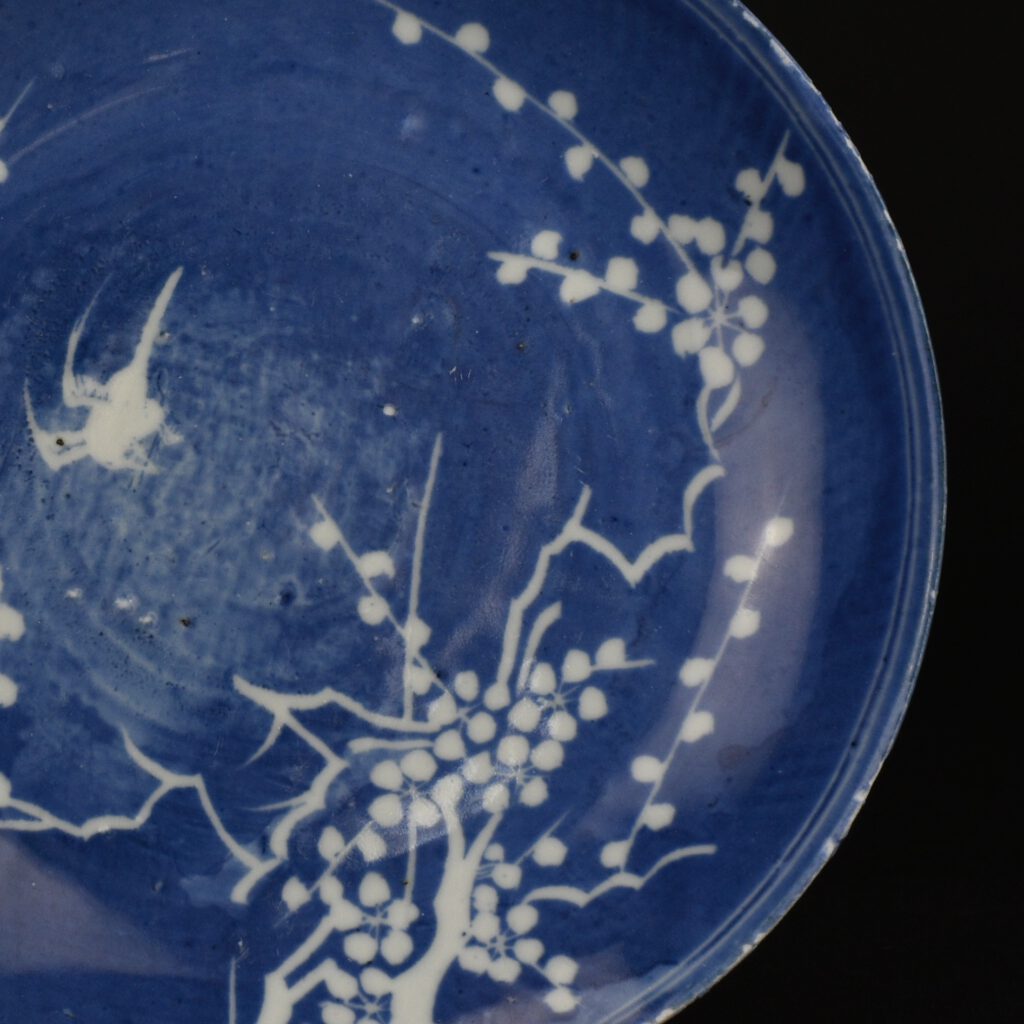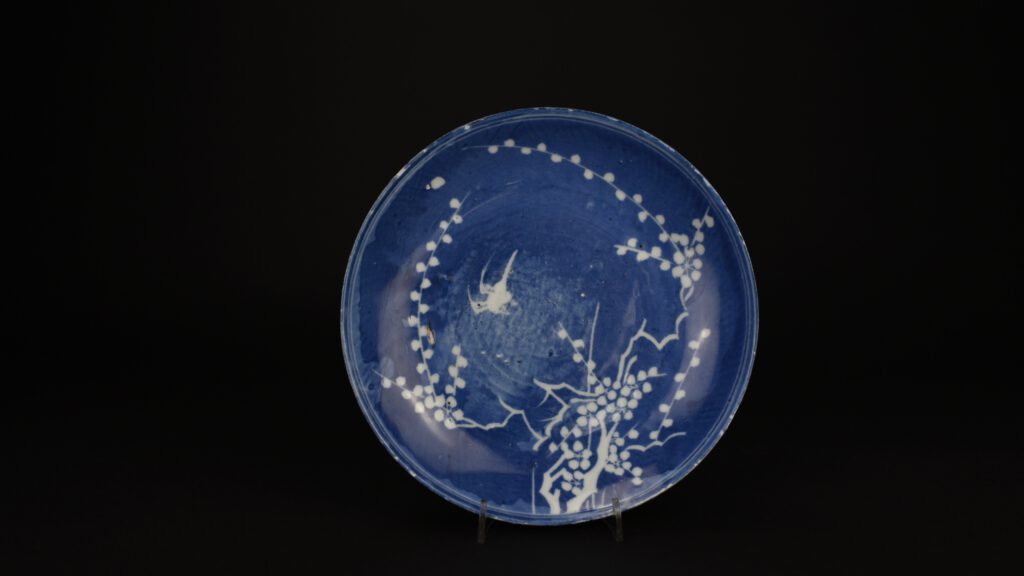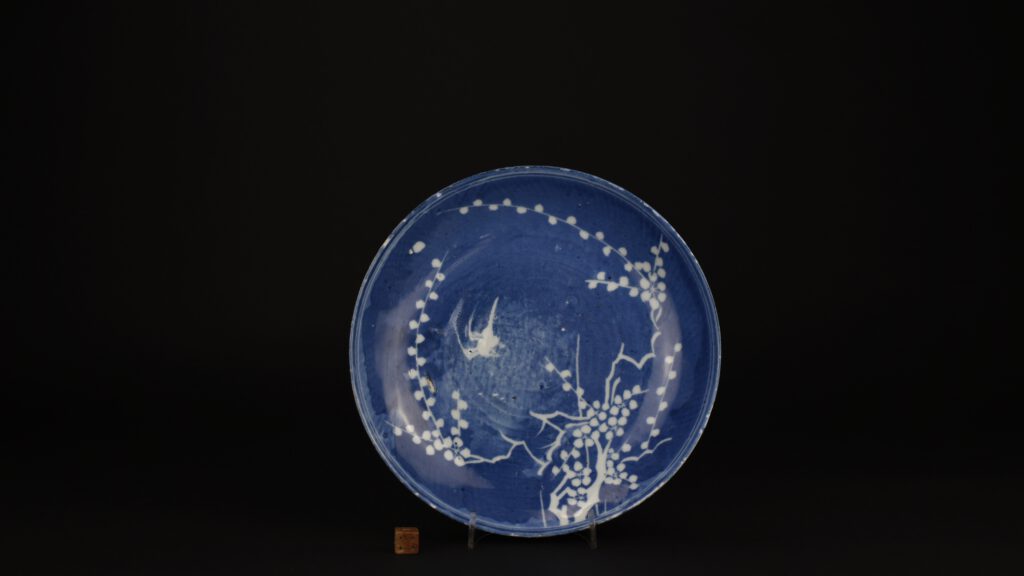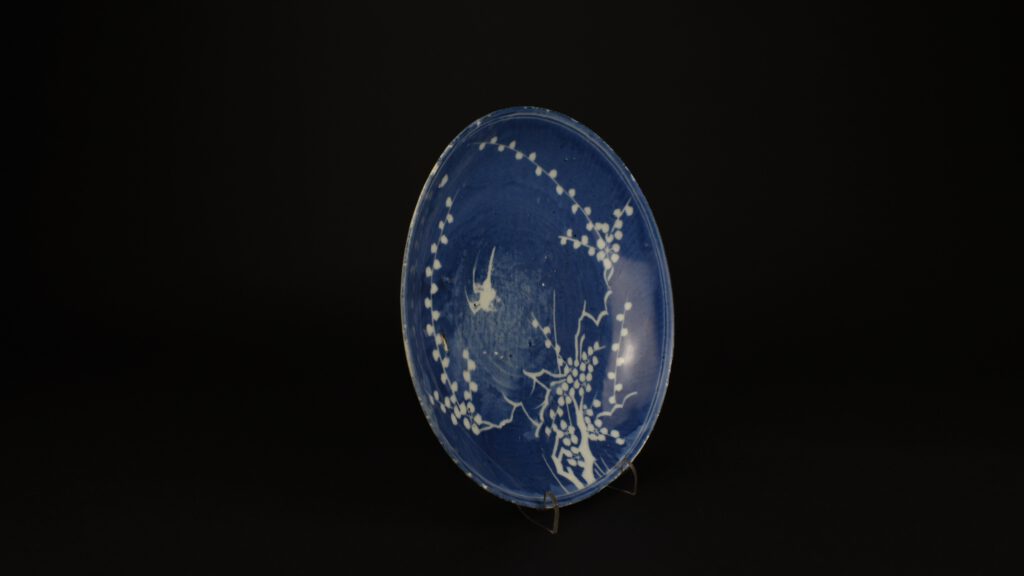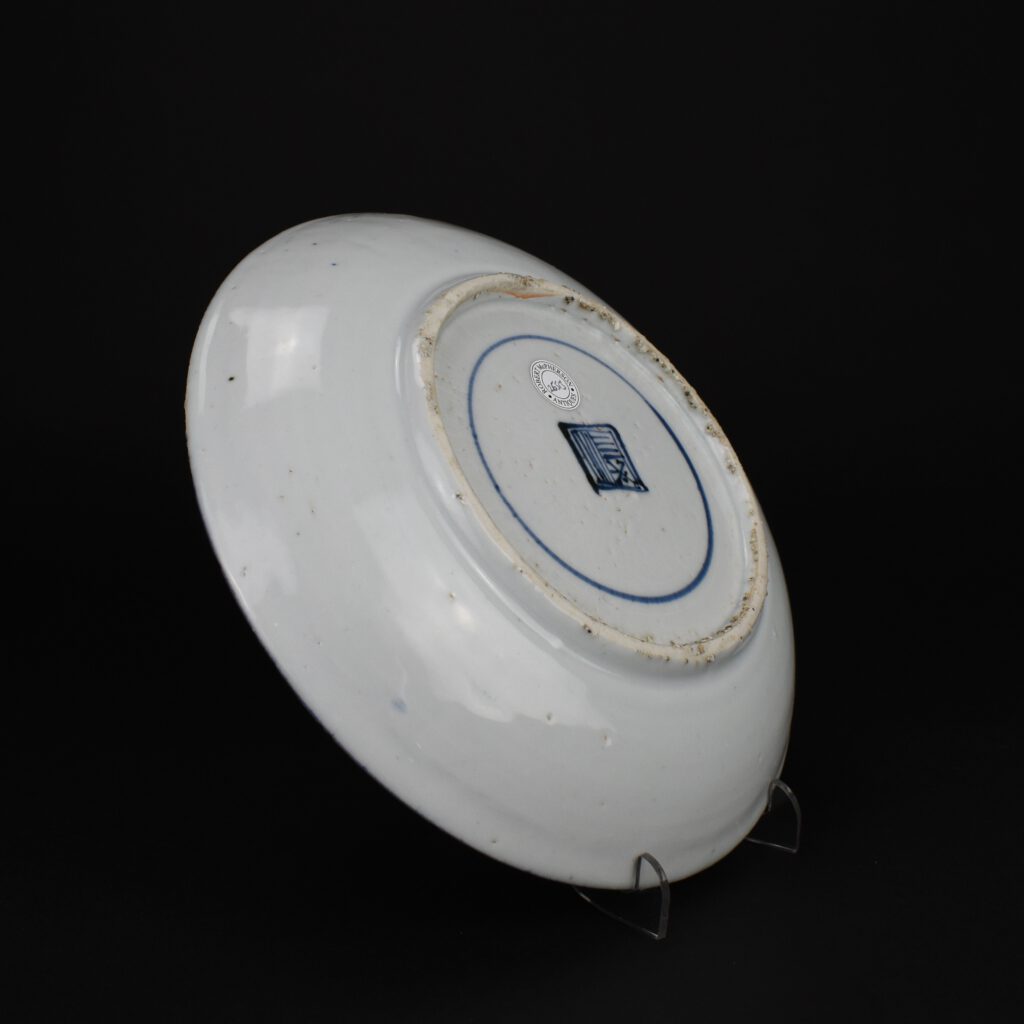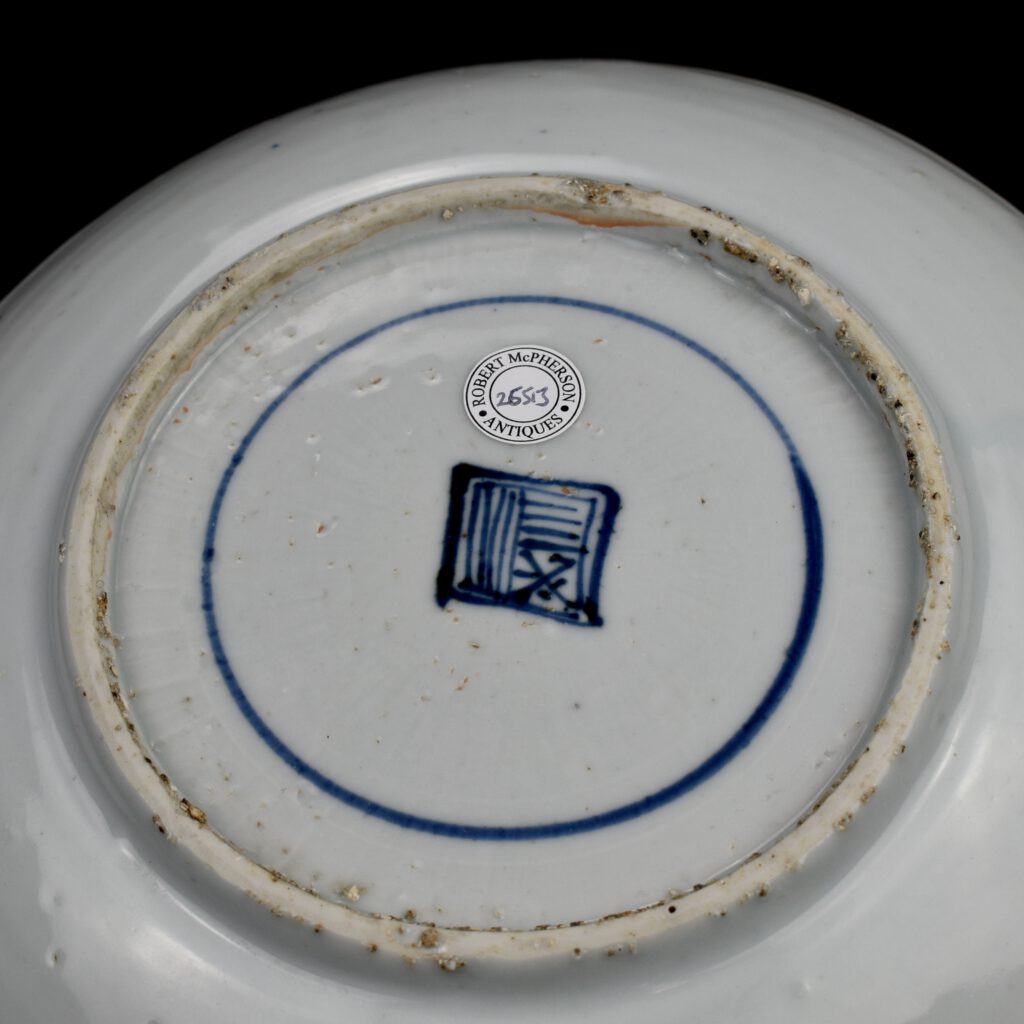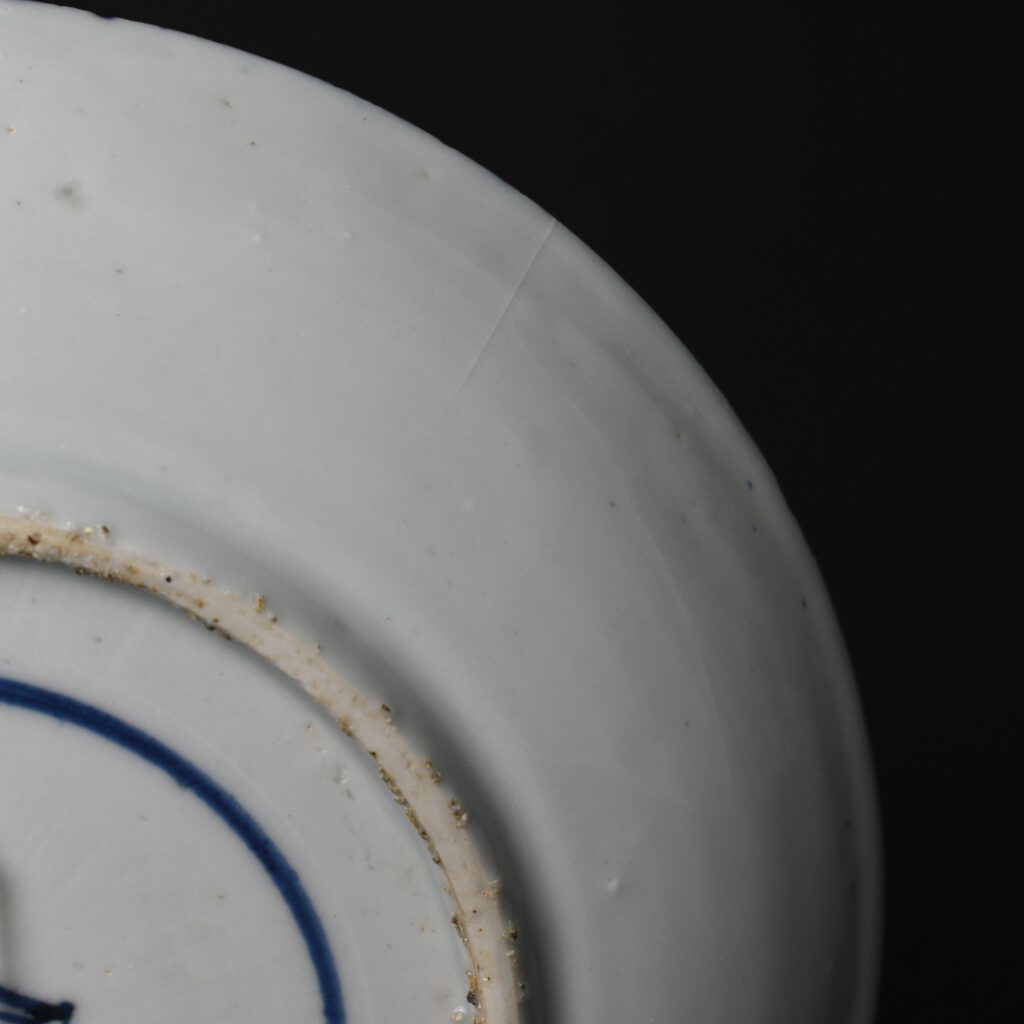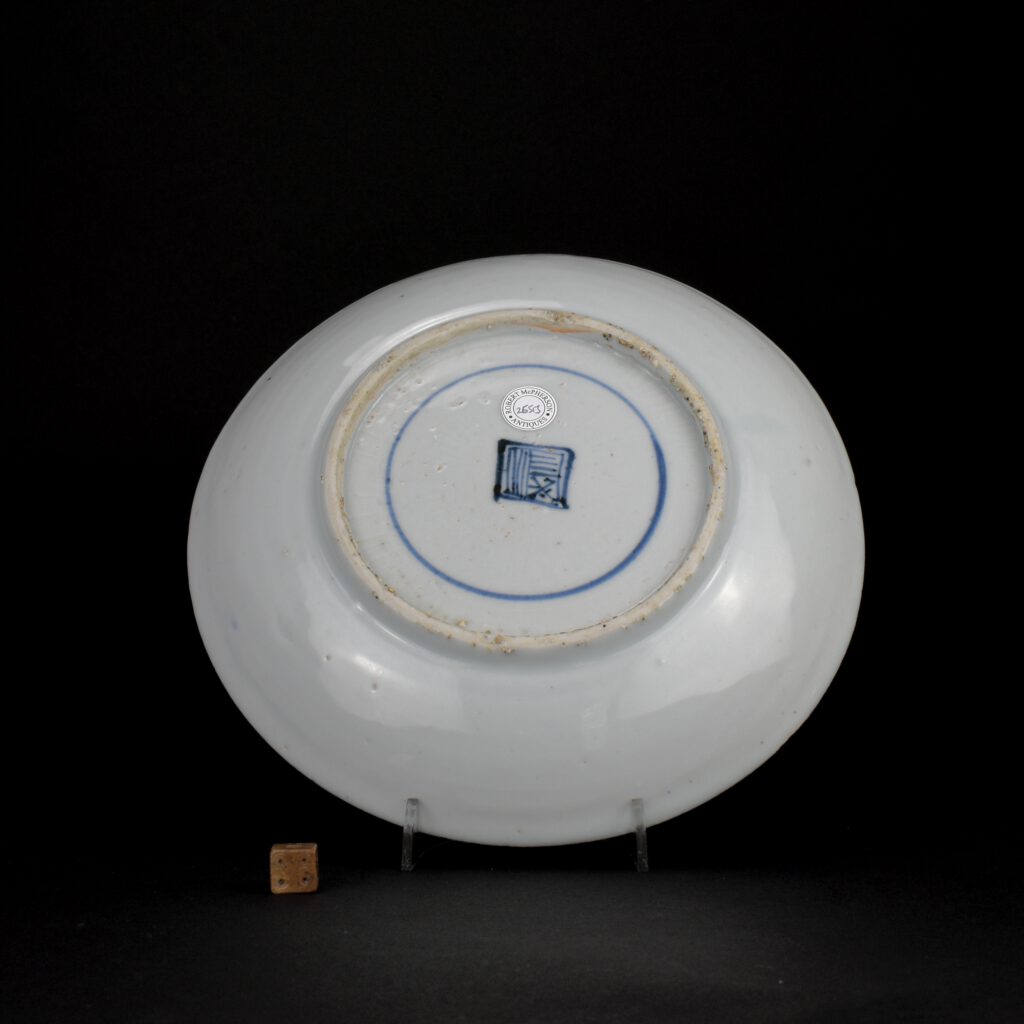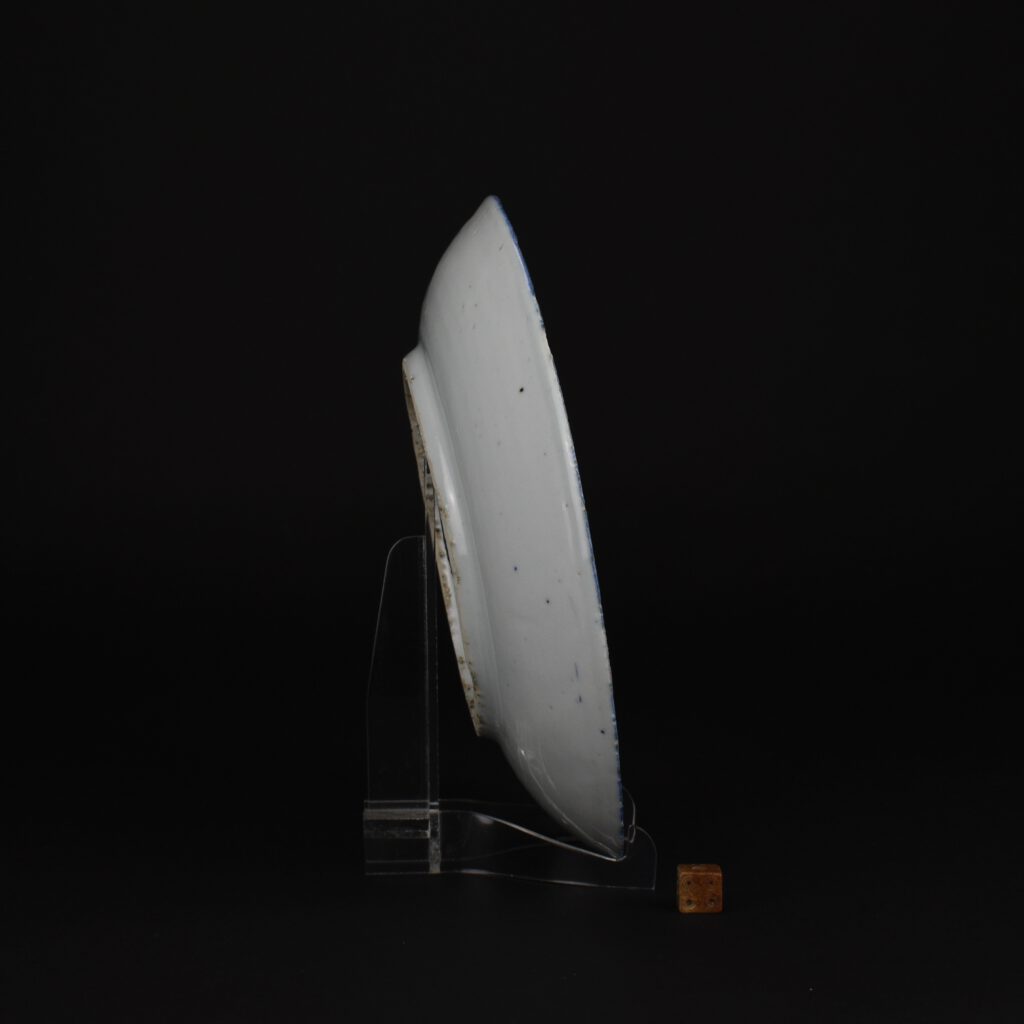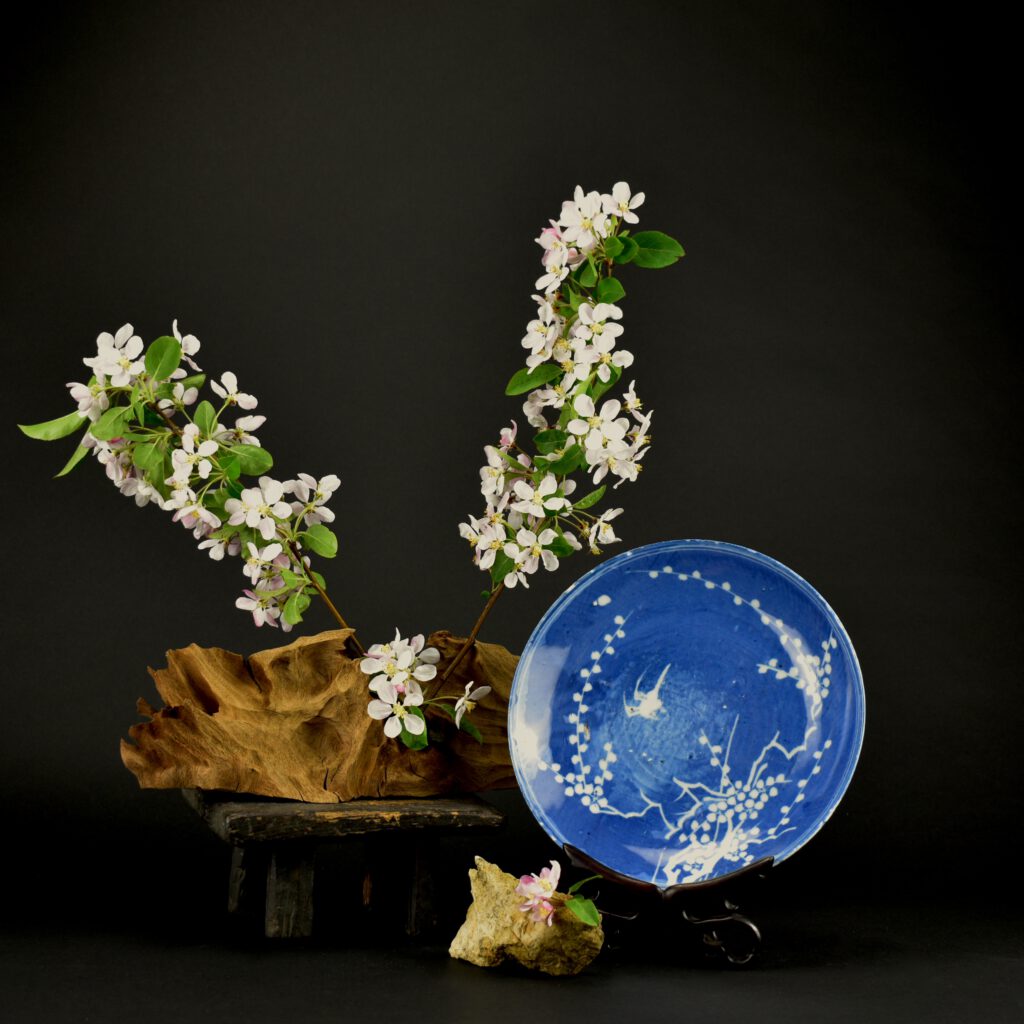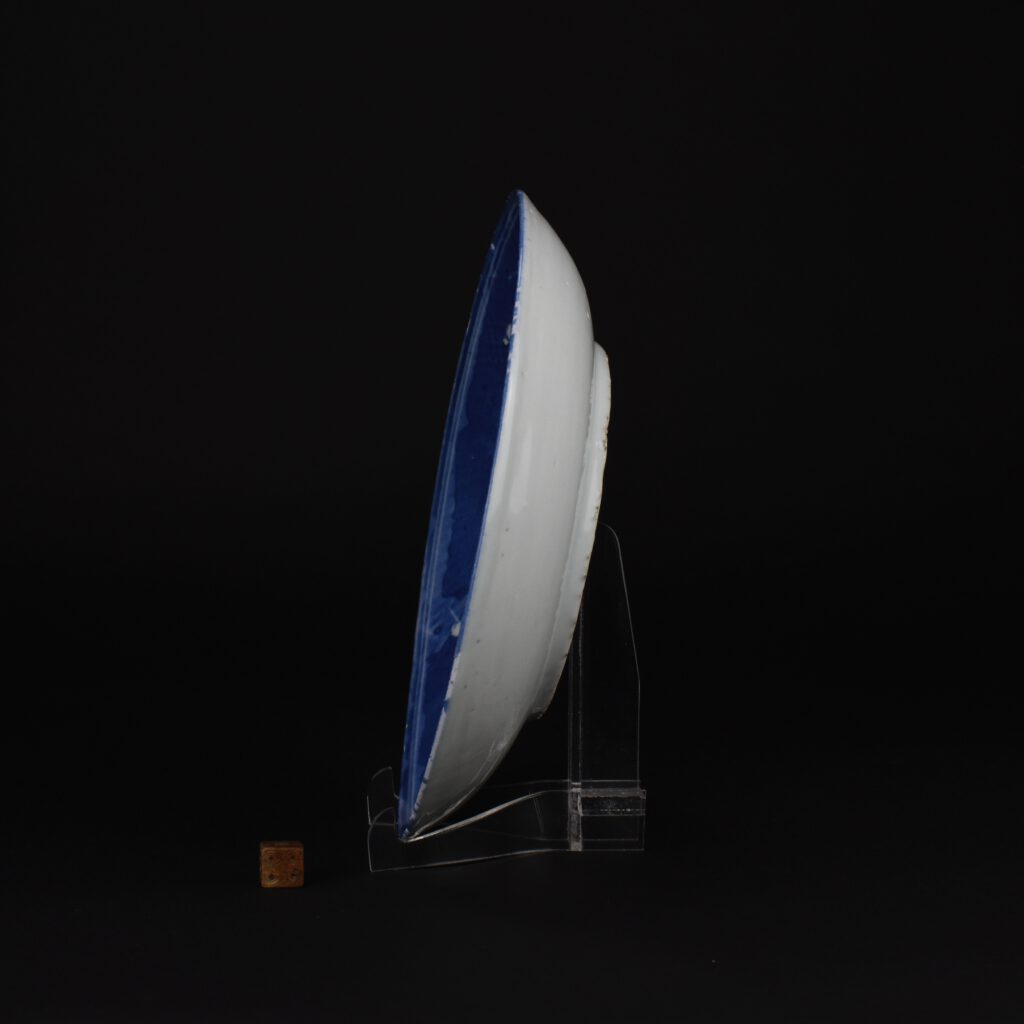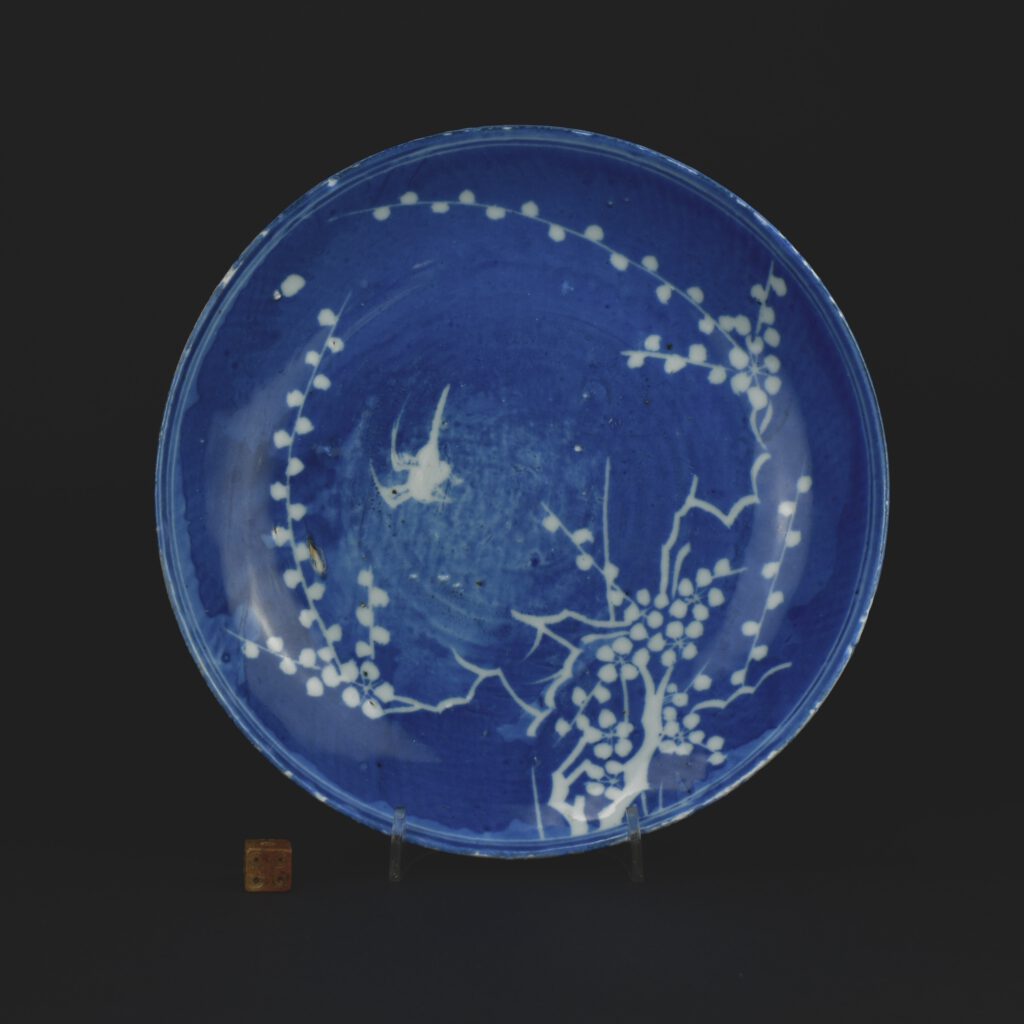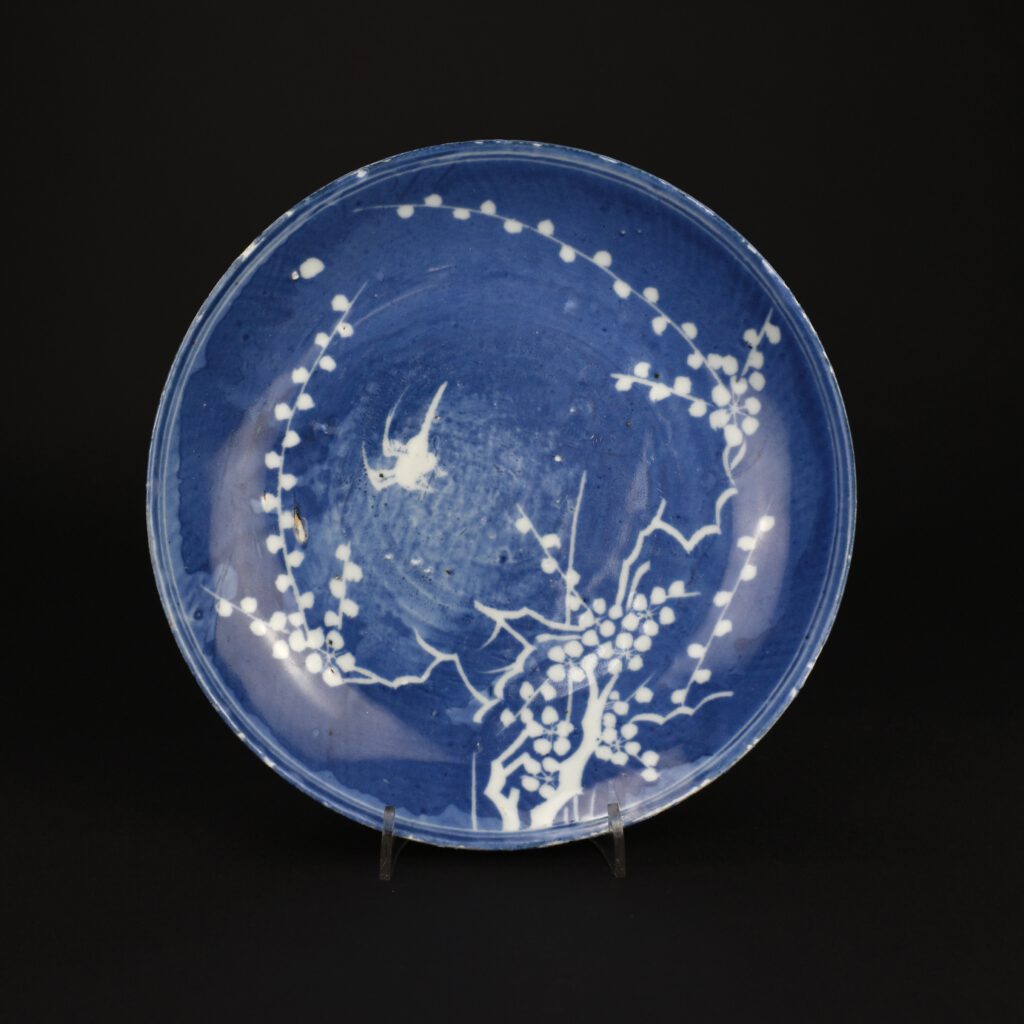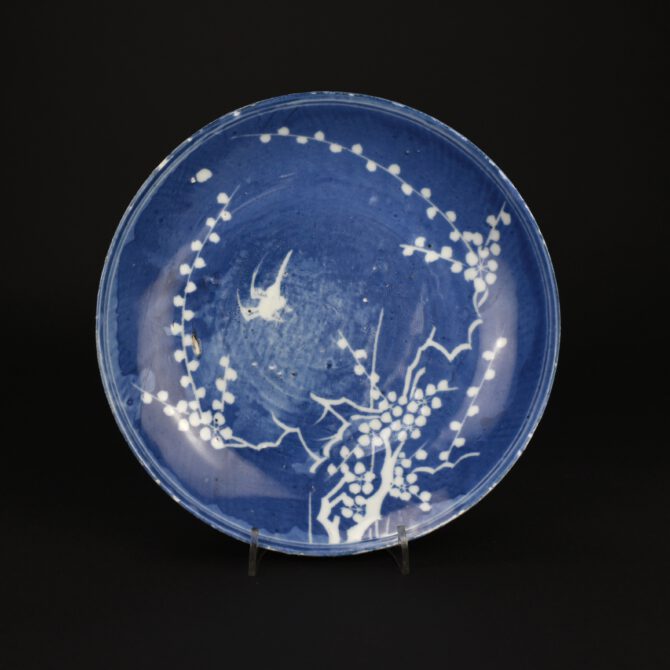
Late Ming Ko-Sometsuke Porcelain Dish
A Late Ming Ko-Sometsuke Dish, Tianqi or Chongzhen Period (1621-1644). This unusual Ming Kaiseki serving dish is decorated with flowering prunus, a bird flies overhead in a moon lit nights sky, the design is framed by two fine white lines. The technique is not Kaiseki Fukizumi, the use of powder blue blown onto the surface but pure wax resist against a blue ground. The design was painted using wax, it probably had some form of colouring in the wax so the painter could see what they have painted. The entire surface was them covered with cobalt blue glaze, this could have been done more neatly but in keeping with Japanese aesthetics it was applied unevenly. There doesn’t appear to be any sign of brush marks, so the cobalt must have been poured directly onto the surface of the dish, with the excess tipped away. When the dish was fired the wax decoration would have been burnt off, leaving the white of the porcelain to stand out. This technique is similar Batik, a wax resist method of colouring fabric that came from the island of Java, Indonesia. Ko-Sometsuke is a term used to describe Chinese blue and white porcelain made for Japan, it means ‘old blue and white’. This late Ming porcelain was made from the Wanli period (1573-1620) until the Chongzhen period (1628-1644), the main period of production being the 1620`2 and 1630`s. The porcelain objects produced were made especially for the Japanese market, both the shapes and the designs were tailored to Japanese taste, the production process too allowed for Japanese aesthetics to be included in the finished object. Its seems firing faults were added, repaired tears in the leather-hard body were too frequent to not, in some cases, be deliberate. These imperfections as well as the fritting Mushikui (insect-nibbled) rims and kiln grit on the footrims all added to the Japanese aesthetic. The shapes created were often expressly made for the Japanese tea ceremony meal, the Kaiseki, small dishes for serving food at the tea ceremony are the most commonly encountered form. Designs, presumably taken from Japanese drawings sent to China, are very varied, often using large amount of the white porcelain contrasting well with the asymmetry of the design.
SOLD
- Condition
- A fine crack 3cm, typical rim fritting and some firing faults.
- Size
- Diameter 20.8 cm (8 1/2 inches)
- Provenance
- N/A
- Stock number
- 26513
Information
Ko-sometsuke and Ko-akai : Ming Porcelain Made For Japan
Both of these terms Japanese terms refer to Chinese porcelain made for the Japaneses market, they are pieces that were used for the Japanese tea ceremony or closely associated with it. Ko-sometsuke is a term used to describe Chinese blue and white porcelain made for Japan, while Ko-akai refers to the porcelain decorated with enamels. This late Ming porcelain was made from the Wanli period (1573-1620), through the Tianqi period (1621 - 1627) ending in the Chongzhen period (1628-1644), the main period of production being the 1620'2 and 1630's. The porcelain made in China for Japanese reflected a rise in interest of the Japanese tea ceremony, but it also coincided with the beginning of porcelain production in Japan (from c.1610/20). The porcelain objects produced in China were made especially for the Japanese market, both the shapes and the designs were tailored to Japanese taste, the production process too allowed for Japanese aesthetics to be included in the finished object. Its seems firing faults were added, repaired tears in the leather-hard body were too frequent to not, in some cases, be deliberate. These imperfections as well as the fritted Mushikui (insect-nibbled) rims and kiln grit on the footrims all added to the Japanese aesthetic. These imperfections were something to be treasured by the Japanese, they reflect an imperfect world and the aesthetics of Wabi-Sabi. These 'faults' was an anathema to the Chinese but they went along with it to satisfy the needs of their Japanese customers. The shapes created were often expressly made for the Japanese tea ceremony, especially the meal associated with tea drinking, the Kaiseki. Small dishes for serving food at the tea ceremony are the most commonly encountered form. Designs, presumably taken from Japanese drawings sent to China, these are very varied and often extremely imaginative. They often used large amount of the white porcelain contrasting well with the asymmetry of the design, sometime the Chinese couldn't help themselves but to fill in these gaps with 'excess' decoration. Many other forms were made, among them are charcoal burners, water pots, Kōgō (incense box) as well as variously shaped dishes in the form of fish, fruit or familiar country animals.
